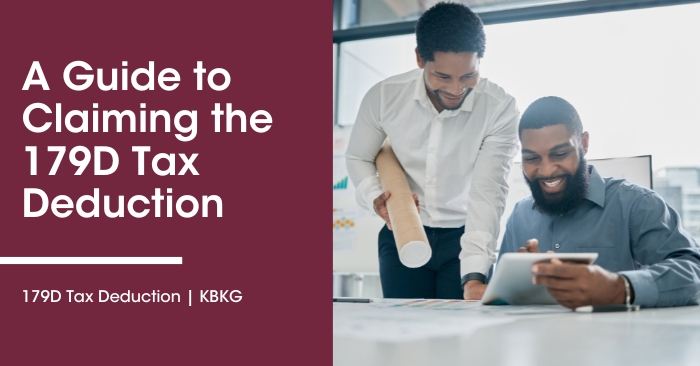Using the 179D Deduction
Successfully running and managing a business requires paying attention to a lot of things, including tax planning. Taxes get complicated, and it can be tough for the average business owner to know which deductions and credits could benefit their company.
Take the 179D deduction. This provision allows eligible taxpayers to get a deduction for creating energy-efficient commercial buildings or making energy-efficient improvements to a building. Understanding how to claim this deduction and who can do so can be confusing, which is why KBKG is here to help.
How Can You Use the 179D Deduction?
At its core, the 179D offers a deduction of up to $5.65 per square foot of a qualifying building that can now be considered tax-exempt. For a 100,000-square-foot building, the deduction could be as much as $565,000, lowering your tax burden. This is money that you can reinvest into your company.
To obtain this deduction, you will have to get a certification that shows your building or your improvements meet certain energy use standards. Usually, meeting the appropriate standards will deal with three areas of the building: the building envelope, the HVAC system and the lighting systems. If you’ve made energy-efficient upgrades or investments in these areas, you can likely qualify for the 179D.
Who Can Claim the 179D Deduction?
In general, to claim this deduction, you have to be either the building owner or the building designer. This ensures the people who put the most effort into making the building more efficient get the benefits.
Owners
Entities that invest in purchasing or constructing a commercial building that meets the appropriate energy requirements can claim the 179D tax deduction. Ideally, the building would be a large commercial property with high square footage so you can get the most from the deduction.
It’s important to note that an owner who wants to take advantage of this deduction cannot be in a tax-exempt situation. If they are, they no longer qualify.
Designers
Since so many of the largest commercial spaces are run by tax-exempt groups such as nonprofits, hospitals, educational groups and government agencies, there are many cases in which a commercial building owner cannot claim the 179D deduction. In these situations, it may be possible for the designer to claim the deduction instead.
To do so, there are a few criteria to be aware of. The designer needs to show that they are an architect, engineer, contractor or other party responsible for providing enhancements for the building that make the building envelope, lighting or HVAC energy-efficient. The designer will also need to get the proper certifications for those enhancements, the same way the building owner would have.
There is an extra step for designers: They need an allocation letter. This document makes it clear that the tax-exempt owner is allowing the 179D deduction to be passed on to the designer. The designer will also need all relevant documentation regarding the improvements that were made and their associated costs.
Let a Tax Expert Guide You
As with many deductions, the 179D comes with a lot of nuances that can make filing tricky. From knowing if your building qualifies to deciding if the deduction should be passed on to a designer and how to do so, there are many details to navigate. While you might be able to figure it out on your own, you will generally save time and money by letting tax specialists sort this out for you.
KBKG has the team to do just that. To find out if the 179D deduction could save your business money, contact us for a consultation and get the guidance you need.


